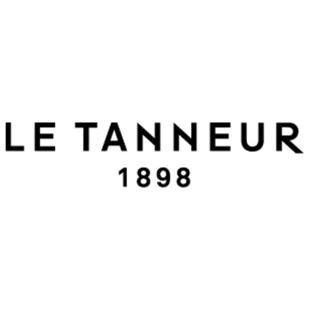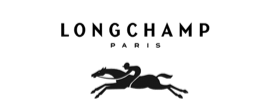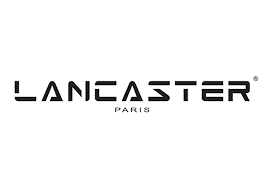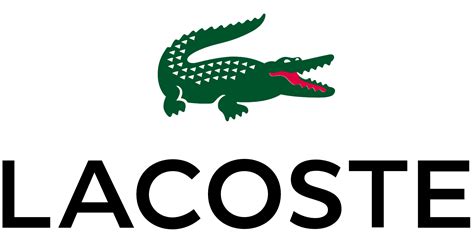Summary
Il mercato globale delle borse, valutato a 73,32 miliardi di dollari nel 2022, dovrebbe crescere a un tasso CAGR del 6,8% fino al 2030, grazie all'aumento del potere d'acquisto nei Paesi in via di sviluppo e al maggior numero di donne che lavorano. Anche il mercato francese delle borse ha registrato una forte crescita, con un aumento del 28,4% nel 2022 rispetto al 2021, raggiungendo un valore stimato di 7,6 miliardi di euro, in gran parte sostenuto dalle esportazioni grazie alla reputazione del Paese nel settore della pelletteria. La Francia, secondo produttore europeo di borse dopo l'Italia, ha una produzione interna significativa, con un valore di quasi 1,656 miliardi di euro nel 2022 e un volume di 12,378 milioni di unità prodotte nello stesso anno. Il segmento della pelletteria di lusso all'interno del più ampio mercato della pelle domina, con i principali marchi francesi del lusso come LVMH e Hermès che giocano un ruolo di primo piano. Nonostante la tendenza generale al ribasso del budget per l'abbigliamento dal 2019, con l'80% dei consumatori francesi che intende tagliare le spese all'inizio del 2023, il settore delle borse continua a crescere grazie alla sua reputazione e alla qualità dei suoi prodotti Nel mercato francese delle borse sono emerse tendenze degne di nota, guidate dalle preferenze dei consumatori e da fattori economici più ampi. Nonostante il periodo di riduzione della spesa nel settore dell'abbigliamento, con un calo significativo del valore del mercato dell'abbigliamento di circa il 15% dal 2007 al 2018, il segmento delle borse ha mantenuto la sua resistenza. È interessante notare che, mentre il mercato complessivo dell'abbigliamento ha registrato un leggero aumento delle vendite, raggiungendo tra i 25 e i 30 miliardi di euro nel 2022, questa crescita si è attenuata rispetto al picco osservato tra il 2020 e il 2021. I consumatori francesi stanno rivalutando le loro abitudini di spesa e quasi l'80% ha espresso l'intenzione di ridurre il budget destinato all'abbigliamento all'inizio del 2023. Questo approccio prudente è in gran parte attribuito all'aumento dell'inflazione e a una rivalutazione del fast fashion, che spinge i consumatori verso lo shopping di seconda mano e l'attenzione alla sostenibilità. Lo stesso mercato delle borse sta subendo una trasformazione: le donne, che costituiscono la clientela principale delle borse, si stanno spostando dalla quantità alla qualità. Il numero di donne che possiedono più borse sembra diminuire. Ad esempio, è aumentato sensibilmente il numero di donne che possiedono una sola borsa, mentre il numero di quelle che ne possiedono tre o più è diminuito notevolmente tra il 2014 e il 2019. La preferenza per un numero minore di borse, ma di qualità superiore, può rappresentare una sfida per i marchi di prêt-à-porter noti per i loro volumi di vendita a prezzi inferiori. Inoltre, mentre il prezzo rimane un fattore centrale nelle decisioni di acquisto per la maggior parte dei consumatori francesi, la qualità e l'impatto ambientale stanno guadagnando importanza, influenzando la scelta dei prodotti. È fondamentale notare che, sebbene le preoccupazioni per la sostenibilità stiano crescendo, rappresentano ancora un interesse minoritario di circa il 27%. Dal punto di vista della domanda, l'immagine nazionale gioca un ruolo fondamentale. La reputazione della Francia per la squisita artigianalità degli articoli in pelle, in particolare quelli di lusso, è pressoché impareggiabile e la colloca comodamente al secondo posto tra le nazioni più considerate per la produzione di borse. Questa percezione fa leva sulla forte performance delle esportazioni dei marchi francesi. Un'altra caratteristica del mercato è la spiccata stagionalità delle vendite di borse, che si intensifica durante le festività natalizie, in quanto le borse di qualità diventano spesso i regali preferiti per le occasioni speciali. La produzione francese di borse riflette le dinamiche in evoluzione del mercato e dei produttori nazionali. Nel 2022, la produzione di borse ha raggiunto un valore di quasi 1,6 miliardi di euro, raddoppiando nell'ultimo decennio. Il volume di produzione è tornato ai livelli pre-pandemia nel 2022, con una produzione compresa tra 10 e 15 milioni di unità. Prezzi per.### I titani del mercato francese delle borse Nel regno degli accessori di moda, le borse occupano un posto speciale come oggetto di utilità e di stile. In questo ambito, diversi attori chiave si sono affermati, non solo sul mercato francese ma a livello globale, creando prodotti che fondono artigianalità, lusso e innovazione. In testa ci sono le case di lusso francesi e i marchi specializzati che sono diventati sinonimo di qualità ed eleganza. **Longchamp** si distingue come faro dell'artigianato francese delle borse, offrendo una gamma di prodotti che hanno catturato i cuori dei consumatori attenti alla moda in tutto il mondo. Conosciuta per l'iconica linea Le Pliage, Longchamp ha consolidato la sua reputazione grazie alla combinazione di know-how tradizionale e design moderno, garantendo che la praticità non sacrifichi lo stile. **Lancel** è un altro pilastro dell'industria francese delle borse, con una storia di oltre un secolo nella creazione di articoli in pelle di alta qualità. Il marchio è noto per i suoi materiali pregiati e i dettagli raffinati, abbinati a un'estetica senza tempo che si rivolge a clienti esigenti che apprezzano il patrimonio e la raffinatezza. **Louis Vuitton**, un nome che risuona di lusso, è in prima linea nel definire i contorni degli accessori di moda di alta gamma. Come parte del gruppo LVMH, le borse Louis Vuitton sono una dichiarazione di opulenza e di status, con una meticolosa lavorazione artigianale ed elementi di design immediatamente riconoscibili, come il monogramma LV. **Chanel**, un altro luminare nel panorama del lusso, occupa una posizione venerabile con le sue creazioni classiche e d'avanguardia. Le borse Chanel, in particolare la leggendaria 2.55, emanano un'aria di eleganza chic, incarnando lo spirito della visione innovativa di Coco Chanel nel regno moderno degli accessori di moda di lusso. Oltre a questi giganti del lusso, anche alcuni marchi di prêt-à-porter detengono una quota significativa del mercato delle borse. **Zara**, con il suo approccio fast fashion, si rivolge ai consumatori che cercano tendenze contemporanee a prezzi accessibili. La capacità del marchio di tradurre rapidamente le tendenze della moda di alto livello in collezioni di borse a prezzi accessibili garantisce un flusso costante di clienti. **H&M**, come Zara, opera nel settore del fast-fashion, offrendo un'ampia gamma di borse che completano le sue linee di abbigliamento. Il marchio è abile nell'offrire design all'avanguardia per consumatori attenti al budget, rendendo lo stile accessibile a un pubblico più ampio. **Guess**, noto per la sua estetica giovane e audace, colma il divario tra high street e lusso. Con le sue borse caratterizzate dal logo e da un design accattivante, Guess si rivolge a una fascia demografica che cerca di dare un'impronta
to understand this market
Detailed content
 Inforamtion
Inforamtion
- Number of pages : 30 pages
- Format : Digital and PDF versions
- Last update : 15/11/2021
 Summary and extracts
Summary and extracts
1 Panoramica del mercato
1.1 Definizione e presentazione del mercato
Una borsa è un accessorio moda per riporre gli oggetti di uso quotidiano (portafoglio, chiavi...). Si tratta di un prodotto di massa, destinato principalmente alle donne. Tuttavia, alcuni modelli sono offerti agli uomini, generalmente sotto forma di borse
Le borse si distinguono, tra le altre cose
- Il loro gamma e il loro marchio : lusso, high-end, mid-range, entry level
- Il loro forma e dimensioni : tote bag, tasca, borsa a tracolla, borsa a secchiello, ecc.
- Il loro soggetto : pelle, sintetico, tessile, materiale riciclato, ecc.
Il sito mercato mondiale delle borse è stata stimata a 47 miliardi nel 2018 e si prevede che crescerà a un CAGR (combined annual growth rate) del 5,4% tra il 2019 e il 2025 per raggiungere 67,9 miliardi di dollari nel 2025. Questo dato è sovrastimato perché non tiene conto dell'effetto dell'epidemia di Covid-19, ma è indicativo della forte crescita del settore.
Il sito Francia è il secondo produttore europeo di borse, dopo l'Italia, che da sola rappresenta quasi il 70% della produzione europea. Il fatturato del mercato francese delle borse è quasi raddoppiato in 5 anni e questa crescita è accelerata a partire dal 2017. Il sito dinamismo delle esportazioni e il L'immagine positiva della pelletteria francese sono i fattori principali dietro questo boom. Il mercato è quindi particolarmente dipendente dai suoi clienti esteri.
Inoltre, stanno emergendo nuovi fattori di crescita, in particolare il digitalizzazione del settore, lo sviluppo del di seconda mano e la crescente attenzione dei consumatori per il eco-responsabilità dei prodotti che acquistano.
Mentre l'epidemia di Covid-19 ha portato ad un calo delle vendite durante il contenimento, la crescita strutturale del mercato appare quindi solida. Tra i principali operatori specializzati francesi sul mercato figurano Longchamp, Lancaster, Le Tanneur e La Bagagerie. A questi si aggiungono gli operatori specializzati stranieri, in particolare quelli italiani come Gucci e Tuscany Leather. I rivenditori di prêt-à-porter, accessori e calzature offrono spesso anche borse.
Tutti questi attori sono spesso produttori che distribuiscono direttamente i loro prodotti. Tuttavia, le borse sono distribuite anche nei grandi magazzini, come Les Galeries Lafayette, supermercati e ipermercati, e su Internet, da giocatori puri, come Asos o Zalando, o da società di vendita per corrispondenza, come La Redoute.
 List of charts
List of charts
- Market share of leading luxury leather brands
- Projected leather sales
- Projected size of the global handbag market
- Ranking of European handbag manufacturers by volume
- Size of the French handbag market
All our studies are available online in PDF format
Take a look at an example of our research on another market!
Latest news
Companies quoted in this study
This study contains a complete overview of the companies in the market, with the latest figures and news for each company. :
 Choosing this study means :
Choosing this study means :
Access to more than 35 hours of work
Our studies are the result of over 35 hours of research and analysis. Using our studies allows you to devote more time and added value to your projects.
Benefit from 6 years' experience and over 1,500 industry reports already produced
Our expertise enables us to produce comprehensive studies in all sectors, including niche and emerging markets.
Our know-how and methodology enable us to produce reports that offer unique value for money.
Access to several thousand articles and paid-for data
Businesscoot has access to all the paid economic press as well as exclusive databases to carry out its market research (over 30,000 articles and private sources).
To enhance our research, our analysts also use web indicators (semrush, trends, etc.) to identify market trends and company strategies. (Consult our paying sources)
Guaranteed support after your purchase
A team dedicated to after-sales service, to guarantee you a high level of satisfaction. +44 238 097 0676
A digital format designed for our users
Not only do you have access to a PDF, but also to a digital version designed for our customers. This version gives you access to sources, data in Excel format and graphics. The content of the study can therefore be easily retrieved and adapted for your specific needs.
 Our offers :
Our offers :
il mercato delle borse | Francia
- What are the figures on the size and growth of the market?
- What is driving the growth of the market and its evolution?
- What is the positioning of companies in the value chain?
- Data from several dozen databases
Pack 5 études (-15%) Francia
- 5 études au prix de 75,6€HT par étude à choisir parmi nos 800 titres sur le catalogue France pendant 12 mois
- Conservez -15% sur les études supplémentaires achetées
- Choisissez le remboursement des crédits non consommés au terme des 12 mois (durée du pack)
Consultez les conditions du pack et de remboursement des crédits non consommés.





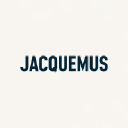 Jacquemus, the fashion "darling" looking to grow | Jacquemus looks to expand - 18/01/2024
Jacquemus, the fashion "darling" looking to grow | Jacquemus looks to expand - 18/01/2024
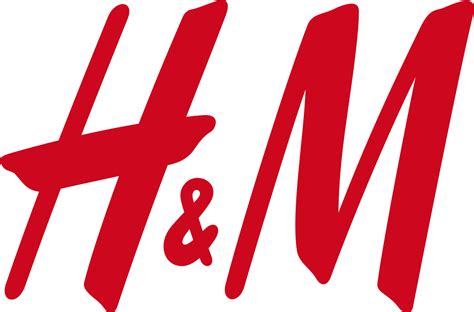 Host and Primark: The nightmare continues for H&M, overtaken by Shein - 15/12/2023
Host and Primark: The nightmare continues for H&M, overtaken by Shein - 15/12/2023
 Leboncoin: a $12 billion bid for the classified ads parent company - 22/11/2023
Leboncoin: a $12 billion bid for the classified ads parent company - 22/11/2023
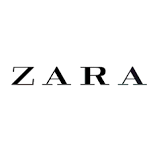 Five things you need to know about Inditex, the owner of Zara stores - 17/09/2023
Five things you need to know about Inditex, the owner of Zara stores - 17/09/2023


